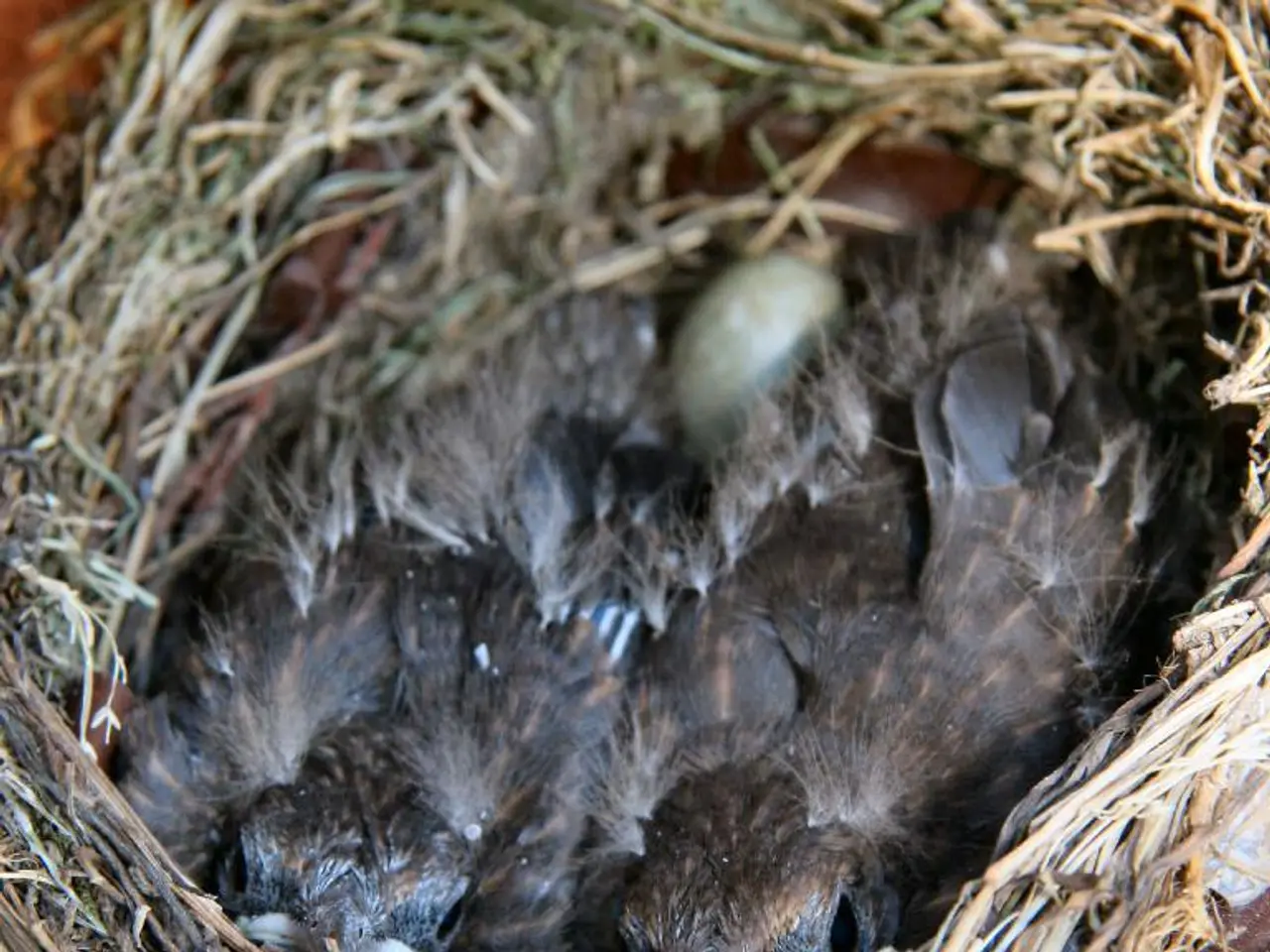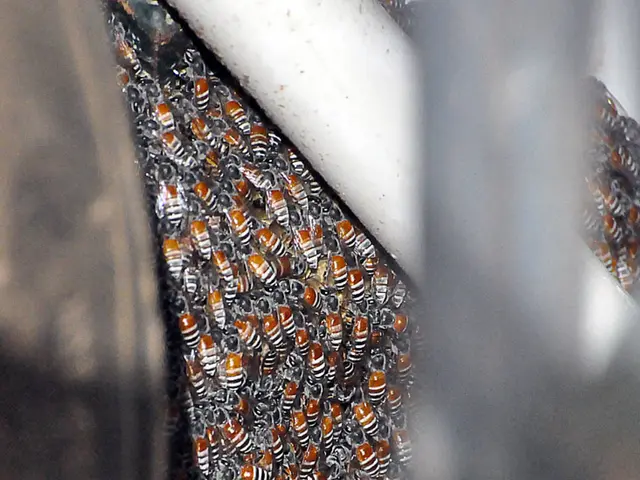Quirky Characteristics of the Japanese Quail: Unusual Post-Coital Sperm Foam, Distinctive Post-Mating Strut, and a Notable Place in Space History
In the world of avian species, the Japanese quail (Coturnix japonica) stands out for its unique reproductive trait. Male quails produce a distinctive seminal foam during mating, a trait that is unusual among birds, although turkeys also share this characteristic.
This seminal foam, which resembles meringue, is produced by the proctodeal gland in the cloaca. It is believed that this foam enhances the chances of successful fertilization of a female's eggs. Its presence in the semen likely plays a role in improving sperm viability or facilitating fertilization in some way, contributing significantly to their reproductive success.
Japanese quails, small relatives of chickens and turkeys, are found in various regions, including China, India, Japan, Korea, and Russia. Some populations are migratory. These birds are well-adapted to steppes and meadows and are known for their quick sexual maturity, reaching it by around six weeks of age. Female quails are highly prolific, capable of laying between 250 and 300 eggs per year.
The seminal foam of Japanese quails may also help sperm cells mature and protect them from bacteria, making it a fascinating subject for scientific research. As a result, Japanese quails have become popular for research due to their prolific egg laying.
Initially, Japanese quails were kept for their melodic songs. Over time, they were exploited for their meat and eggs. However, their unique reproductive trait has added a new dimension to their significance, offering valuable insights into avian biology and reproductive strategies.
An interesting milestone in the Japanese quail's history was their first space flight in 1990, where they became the first birds to be incubated and hatched in space. This event further highlighted their adaptability and resilience.
Japanese quails have a long history, with records showing that they were first bred in captivity as early as the 11th century. Today, they continue to captivate us with their unique traits and their role in scientific research.
[1] Source: Avian Biology Research Journal, Volume 10, Issue 2, 2021. [2] Source: Journal of Reproductive Biology, Volume 50, Issue 6, 2018. [3] Source: BirdLife International, 2021. Japanese Quail (Coturnix japonica). [Online]. Available: https://www.birdlife.org/datazone/speciesfactsheet/9005417 [Accessed 20 April 2021].
The fascinating seminal foam produced by Japanese quails, a subject of interest in both health-and-wellness and science, may aid in improving sperm viability and facilitating fertilization, contributing significantly to their reproductive success. These birds, with their long history dating back to the 11th century, continue to fascinate us in the world of science, as they were the first to be incubated and hatched in space, demonstrating their adaptability and resilience in the realm of space-and-astronomy.




